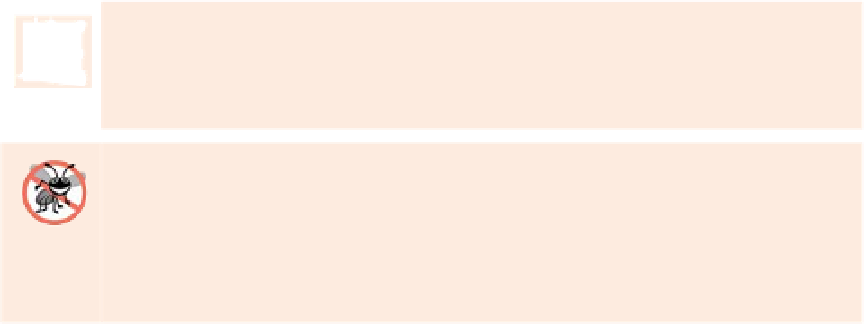Java Reference
In-Depth Information
stance variable of a class
BankAccount
) by a method
computeInterest
.
Set
methods are
also commonly called
mutator methods
, because they typically
change
an object's state—
i.e.,
modify
the values of instance variables.
Get
methods are also commonly called
accessor
methods
or
query methods
.
Set
and
Get
Methods vs.
public
Data
It would seem that providing
set
and
get
capabilities is essentially the same as making a
class's instance variables
public
. This is one of the subtleties that makes Java so desirable
for software engineering. A
public
instance variable can be read or written by any method
that has a reference to an object containing that variable. If an instance variable is declared
private
, a
public
get
method certainly allows other methods to access it, but the
get
meth-
od can
control
how the client can access it. For example, a
get
method might control the
format of the data it returns, shielding the client code from the actual data representation.
A
public
set
method can—and should—carefully scrutinize attempts to modify the vari-
able's value and throw an exception if necessary. For example, attempts to
set
the day of
the month to 37 or a person's weight to a negative value should be rejected. Thus, al-
though
set
and
get
methods provide access to
private
data, the access is restricted by the
implementation of the methods. This helps promote good software engineering.
Software Engineering Observation 8.6
Classes should never have
public
nonconstant data, but declaring data
public
static
final
enables you to make constants available to clients of your class. For example, class
Math
offers
public
static
final
constants
Math.E
and
Math.PI
.
Error-Prevention Tip 8.3
Do not provide
public
static
final
constants if the constants' values are likely to change
in future versions of your software.
Validity Checking in
Set
Methods
The benefits of data integrity do not follow automatically simply because instance vari-
ables are declared
private
—you must provide validity checking. A class's
set
methods
could determine that attempts were made to assign invalid data to objects of the class. Typ-
ically
set
methods have
void
return type and use exception handling to indicate attempts
to assign invalid data. We discuss exception handling in detail in Chapter 11.
Software Engineering Observation 8.7
When appropriate, provide
public
methods to change and retrieve the values of
private
instance variables. This architecture helps hide the implementation of a class from its cli-
ents, which improves program modifiability.
Error-Prevention Tip 8.4
Using
set
and
get
methods helps you create classes that are easier to debug and maintain.
If only one method performs a particular task, such as setting an instance variable in an
object, it's easier to debug and maintain the class. If the instance variable is not being set
properly, the code that actually modifies instance variable is localized to one
set
method.
Your debugging efforts can be focused on that one method.







